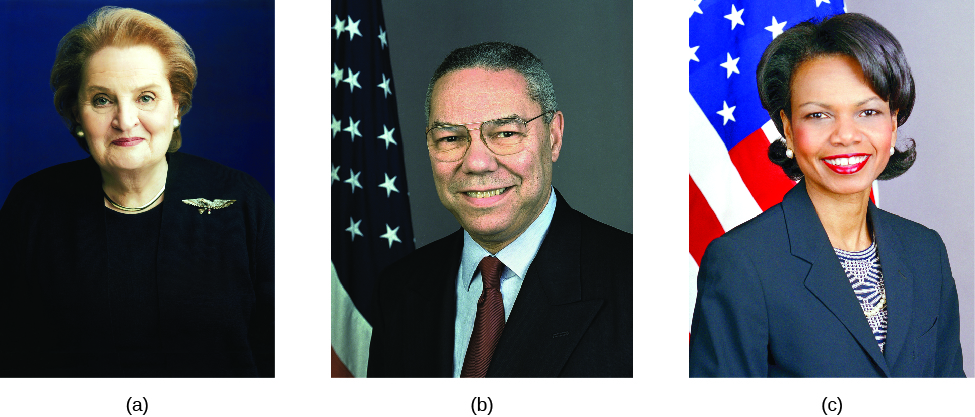| << Chapter < Page | Chapter >> Page > |
Watch “Under Miner” and “Start Wars” to see the take of Jon Stewart and The Daily Show on the Iran Nuclear Agreement.
The last broad type of foreign policy output consists of the foreign policy appointments made when a new president takes office. Typically, when the party in the White House changes, more new appointments are made than when the party does not change, because the incoming president wants to put in place people who share his or her agenda. This was the case in 2001 when Republican George W. Bush succeeded Democrat Bill Clinton, and again in 2009 when Democrat Barack Obama succeeded Bush.
Most foreign policy–related appointments, such as secretary of state and the various undersecretaries and assistant secretaries, as well as all ambassadors, must be confirmed by a majority vote of the Senate ( [link] ). Presidents seek to nominate people who know the area to which they’re being appointed and who will be loyal to the president rather than to the bureaucracy in which they might work. They also want their nominees to be readily confirmed. As we will see in more detail later in the chapter, an isolationist group of appointees will run the country’s foreign policy agencies very differently than a group that is more internationalist in its outlook. Isolationists might seek to pull back from foreign policy involvement around the globe, while internationalists would go in the other direction, toward more involvement and toward acting in conjunction with other countries.

In addition to the broad-based foreign policy outputs above, which are president-led with some involvement from Congress, many other decisions need to be made. These sharply focused foreign policy outputs tend to be exclusively the province of the president, including the deployment of troops and/or intelligence agents in a crisis, executive summits between the president and other heads of state on targeted matters of foreign policy, presidential use of military force, and emergency funding measures to deal with foreign policy crises. These measures of foreign policy are more quickly enacted and demonstrate the “energy and dispatch” that Alexander Hamilton , writing in the Federalist Papers , saw as inherent in the institution of the presidency. Emergency spending does involve Congress through its power of the purse, but Congress tends to give presidents what they need to deal with emergencies. That said, the framers were consistent in wanting checks and balances sprinkled throughout the Constitution, including in the area of foreign policy and war powers. Hence, Congress has several roles, as discussed at points throughout this chapter.

Notification Switch
Would you like to follow the 'American government' conversation and receive update notifications?